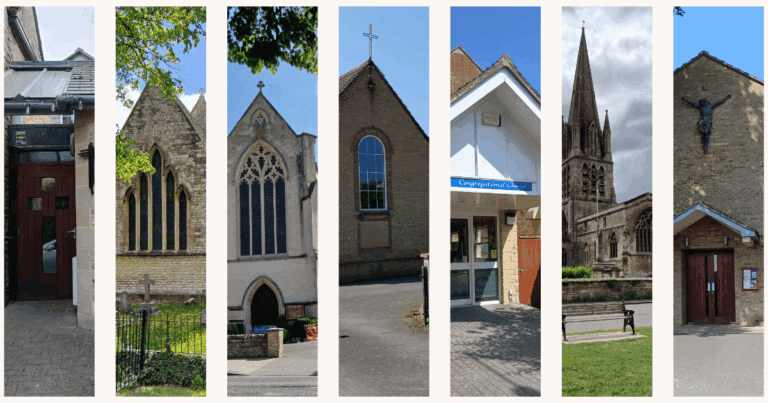
St Mary the Virgin


A fine spacious town church with a central tower and spire, which was remodelled in the thirteenth century. A twelfth-century the Bishop of Winchester laid out a palace just to the east of the church, and a century or so later one of his successors extended the town by laying out Church Green, the Market Square, and the High Street. At the same time the church was enlarged by the addition of a north aisle and south porch. Today the interior is lofty, with tall arcades separating off the aisles, and several side chapels.
Witney grew wealthy from the wool trade, and its church reflects that prosperity. As with any town church, a number of its features recall people and events of significance in the community. A brass on the Wenman Tomb commemorates Richard Wenman, a local sixteenth-century wool trader, shown here in a fur-lined gown with a purse hanging from his belt. The Batt family came to Witney in the 1730s and practised medicine here for several generations. Edward Augustine Batt (d. 1853), whose family later provided land and buildings to found the Batt Church of England Primary School, has a marble memorial illustrating the parable of the Good Samaritan
St Mary’s did not escape the Second World War unscathed. On 2 September 1942, an RAF plane crashed into the spire, and the roof of the chancel was damaged. A new chancel ceiling now commemorates this by depicting the lights of that plane, and of a Hurricane and a Spitfire (many of those were repaired in Witney).

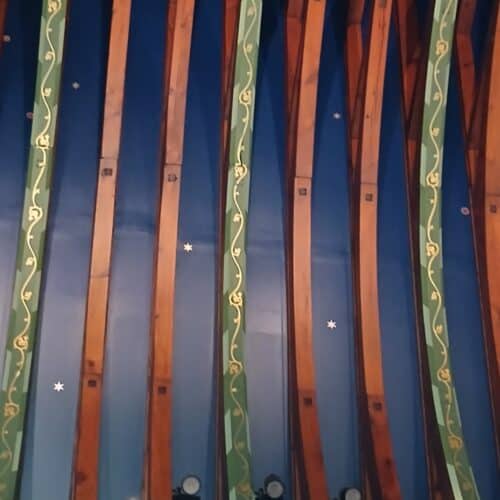
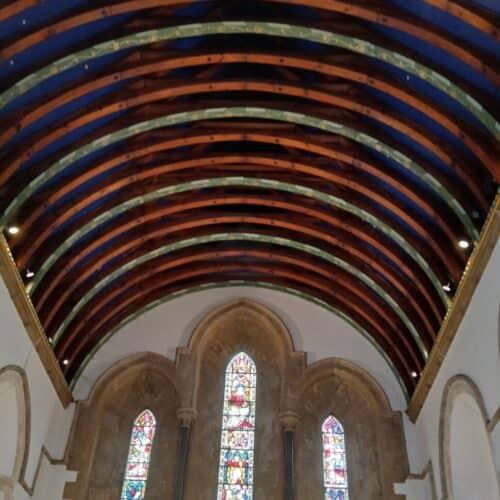
A new (2023) nave altar with a design that links closely to Witney’s past of the wool trade and especially the weaving industry. It is made of cedar, from a cedar of Lebanon tree in the churchyard that had had to be felled. The new altar, fashioned from this, has a central support in the shape of a bobbin. Along the front edge, carved images evoke a shuttle, and the warp and weft of a loom.
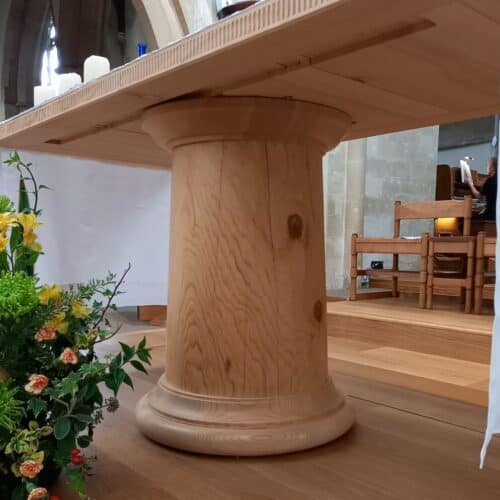
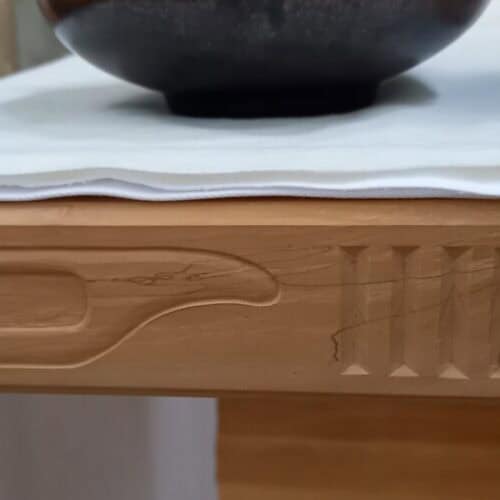
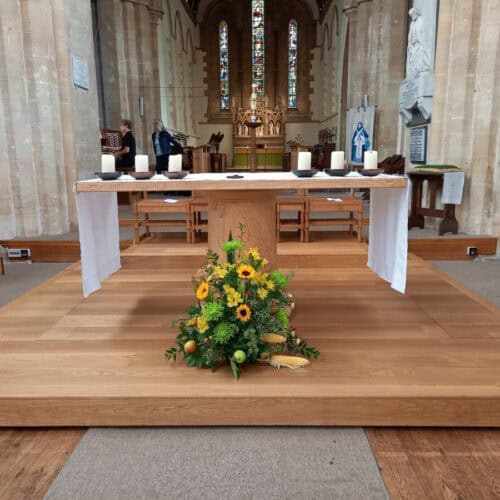
Our Lady and St Hugh
Early bishops of Winchester were as landholders important to Witney’s development, but in that period the town lay within the great medieval diocese of Lincoln, which stretched down to the Thames. (Oxford diocese was not carved out of it until the sixteenth century. The double dedication of Witney’s Roman Catholic church recalls this earlier period through the name of St Hugh of Lincoln.
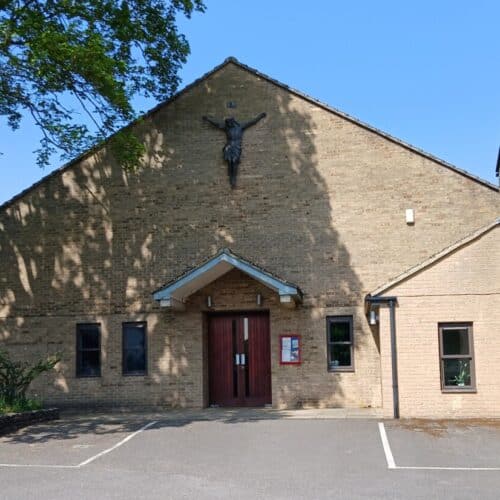
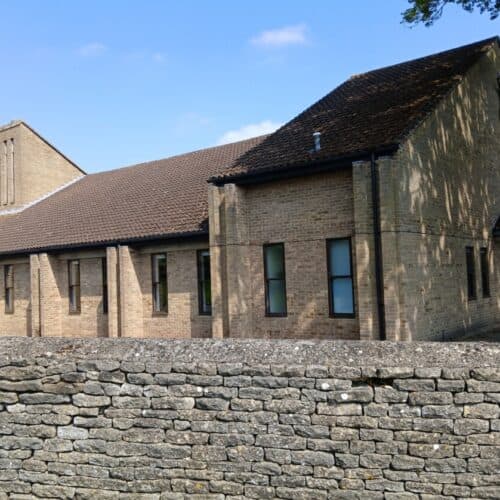
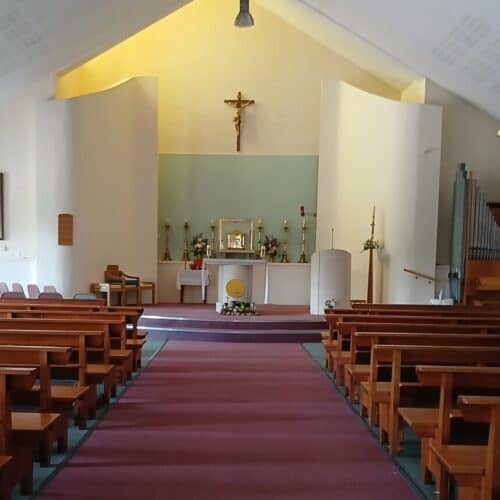
The church was built in 1975, and is of pale brick with pantiled roofs. The interior is light and serene, and there are some striking interior stained-glass panels at the west end, showing St Peter and St Paul on one side, and St Anne and St Mary Magdalene on the other.
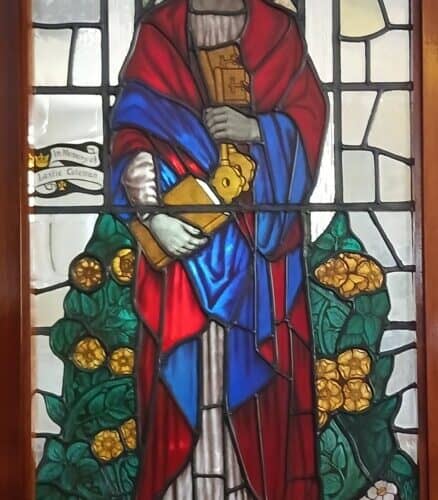

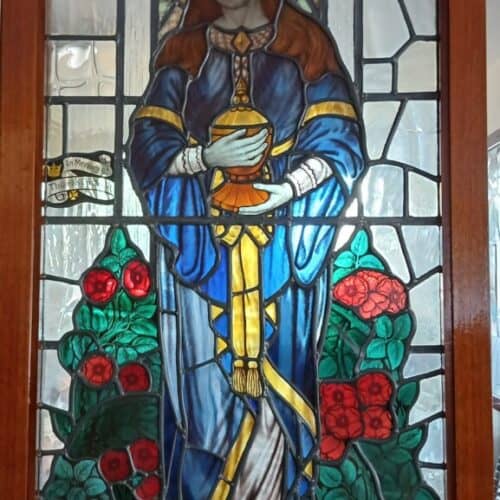

Congregational Church
Th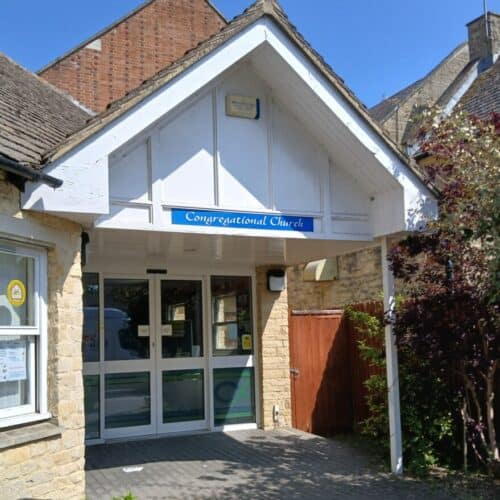 is building, of 1993, replaced an earlier home (of 1828) around the corner in the High Street. The stone frontage which looks out on Welch Way appears relatively modest, but the brick-built church and meeting rooms behind are spacious.
is building, of 1993, replaced an earlier home (of 1828) around the corner in the High Street. The stone frontage which looks out on Welch Way appears relatively modest, but the brick-built church and meeting rooms behind are spacious.
High Street Methodist
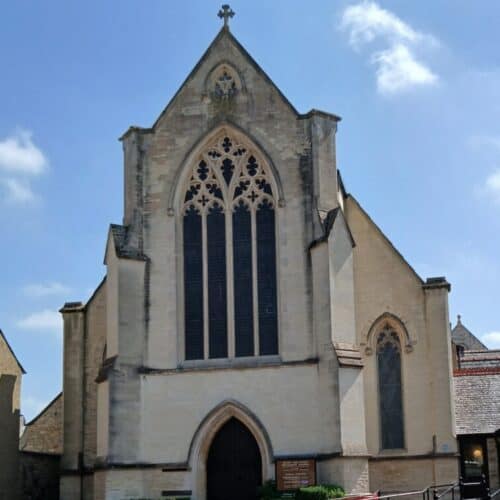 This Wesleyan Methodist chapel, built in 1849-50, was built in stone and in the Gothic style, with a four-light window and flamboyant tracery. It is impressive now, but according to BoE originally also had elaborate pinnacles and a bellcote. The interior was constructed with galleries, but in the 1990s it was reordered to face north, and new entrances were added. Today, as well as offering regular worship, it is a popular and accessible venue for concerts and musical events.
This Wesleyan Methodist chapel, built in 1849-50, was built in stone and in the Gothic style, with a four-light window and flamboyant tracery. It is impressive now, but according to BoE originally also had elaborate pinnacles and a bellcote. The interior was constructed with galleries, but in the 1990s it was reordered to face north, and new entrances were added. Today, as well as offering regular worship, it is a popular and accessible venue for concerts and musical events.
Davenport Road Methodist Church
A mid-twentieth-century building, of pale brick, and hall and chapel set at right angles.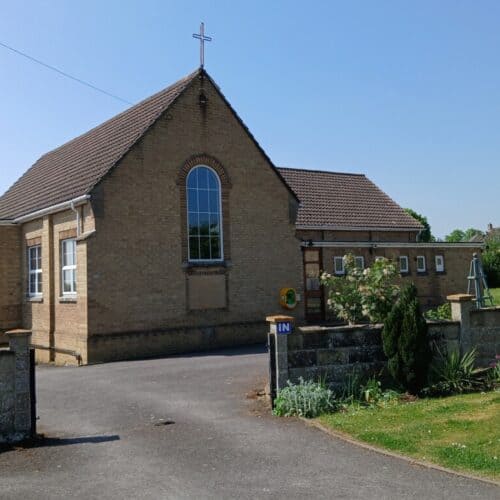
Holy Trinity
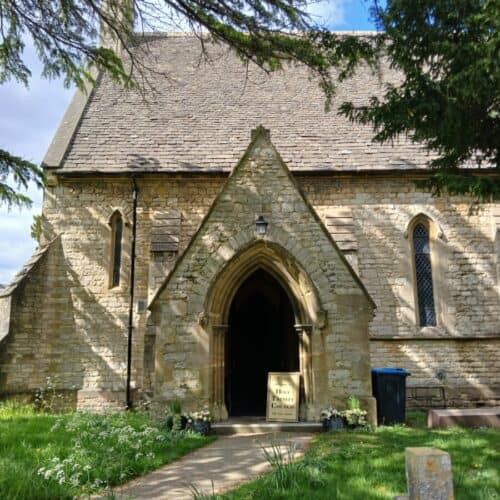

Holy Trinity Church was erected in 1848-9 in an Early English style that BoE calls ‘convincing’. The moving spirit for its construction was apparently the Rector of Witney, Charles Jerram, who felt that St Mary’s Church at the south end of the town was just too far for the residents of Wood Green. Inside, Holy Trinity is simple and light, with an aisleless nave running up to the sanctuary through a screen and below a high chancel arch.
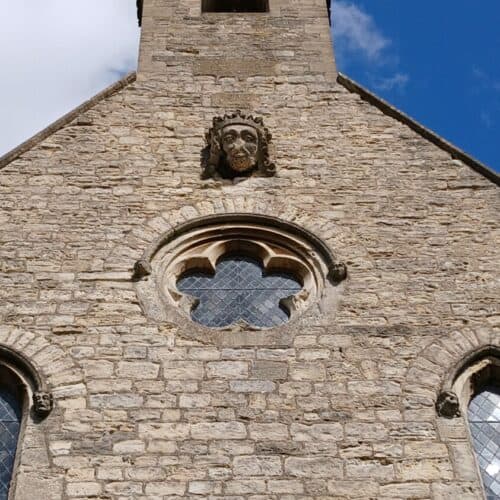

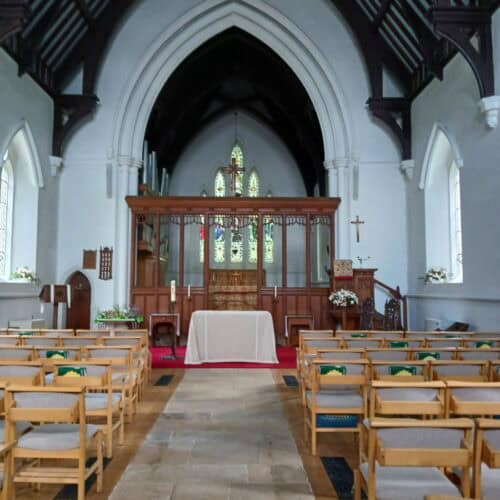
Newland Methodist Chapel
A modest building inserted between neighbouring houses; the single-room chapel has been built out into what was part of the garden of the next-door house.
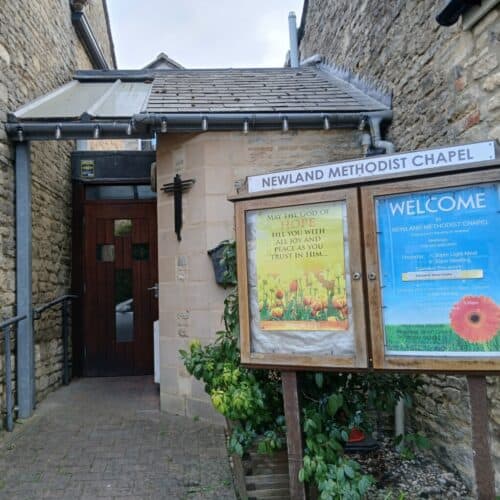
By Elizabeth Knowles
About the Author

Elizabeth Knowles is a renowned library researcher and historical lexicographer who devoted three decades of her career to Oxford University Press. Her time at OUP began with contributions to the OED Supplement and the New Shorter Oxford English Dictionary. Subsequently, she spearheaded the Quotations publishing program, solidifying her reputation as a leading expert in quotations and lexicography.
In 1999, Knowles assumed the prestigious role of Editor of the Oxford Dictionary of Quotations, a position she held continuously until her retirement from OUP in 2007. Under her editorial guidance, the eighth edition was published in 2014, marking a significant milestone in the dictionary’s history.
Knowles is a prolific writer and lecturer on the history of quotations and dictionaries. She has shared her extensive knowledge with both academic and general audiences, significantly enhancing our understanding of the role of quotations in language.
Beyond her work on the Oxford Dictionary of Quotations, Knowles is also the editor of “What They Didn’t Say: A Book of Misquotations” (2006) and “How To Read a Word” (2010). Her work continues to inspire and inform scholars, writers, and readers fascinated by the English language.
All photographs © Elizabeth Knowles unless otherwise noted
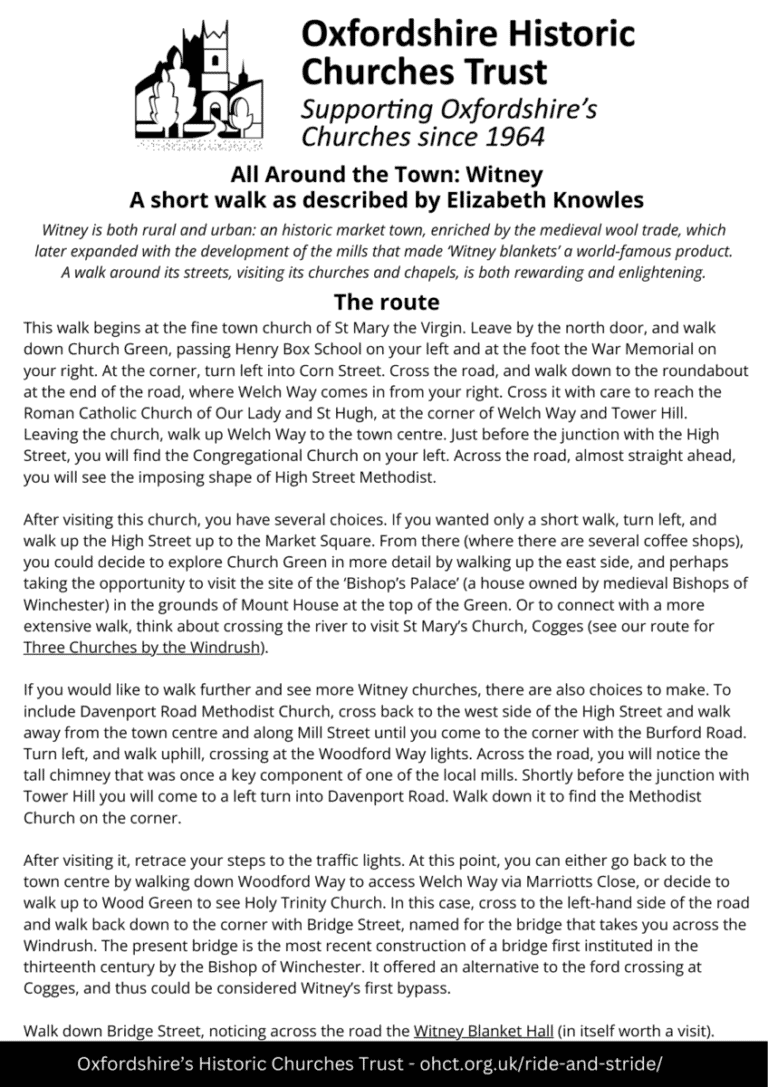
Churches visited on this route